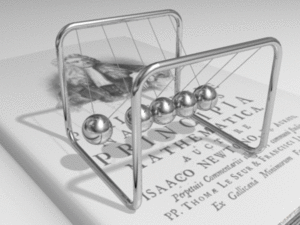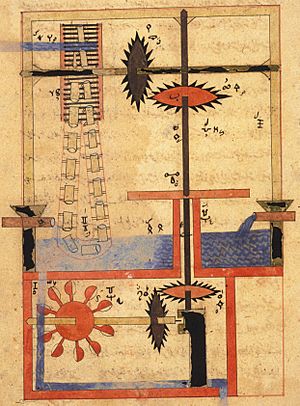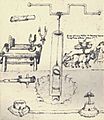Mechanics facts for kids
Mechanics is a branch of physics. It studies how objects move when forces act on them. These forces can come from other objects or from nature itself.
The idea of mechanics started in ancient Greece. Thinkers like Aristotle studied how things moved, like a stone thrown through the air. But it was scientists like Galileo, Kepler, and especially Newton who really built the foundation for what we call Newtonian mechanics today.
Someone who works in this field is called a mechanician.
Contents
What is Mechanics?
Mechanics is one of the oldest parts of physics. It helps us understand the world around us, especially how big things move. It covers everything from how a ball rolls to how planets orbit the sun.
Mechanics looks at how all matter in the universe moves because of four main forces:
- Gravity: The force that pulls things towards each other.
- The strong interaction and weak interaction: These are forces that work inside atoms.
- The electromagnetic interaction: This force causes electricity, magnetism, and light.
Mechanics is also a very important part of technology. It helps engineers design everything from cars to bridges.
Types of Mechanics
There are different areas within mechanics that focus on specific types of movement or objects:
- Astrodynamics: This is about how spacecraft move and how planets orbit.
- Solid mechanics: This studies how solid objects behave, like how they stretch or bend.
- Acoustics: This is the study of sound and how it travels through different materials.
- Hydraulics: This looks at how liquids behave when they are still or moving.
- Applied mechanics: This is about using mechanics to solve real-world engineering problems.
- Statistical mechanics: This looks at how very large groups of tiny particles behave.
- Einsteinian mechanics: This is also known as relativistic mechanics. It deals with gravity and motion at very high speeds, as described by Albert Einstein.
Newton's Laws of Motion
Newton came up with three important laws that explain how objects move:
- First Law: An object will keep moving at the same speed and in the same direction unless a force pushes or pulls on it. If it's still, it will stay still.
- Second Law: The force acting on an object is equal to its mass multiplied by its acceleration. This is often written as F = Ma.
- Third Law: For every action (a force), there is an equal and opposite reaction. For example, when you push a wall, the wall pushes back on you.
Quantum Mechanics
Quantum mechanics is a different kind of mechanics. It studies how very tiny particles behave, like atoms and the even smaller parts inside them.
- Particle physics: This looks at the motion and structure of tiny particles.
- Nuclear physics: This studies the motion and structure of the centers of atoms (nuclei).
- Condensed matter physics: This explores how quantum mechanics affects gases, solids, and liquids.
- Quantum statistical mechanics: This looks at how large groups of these tiny particles behave.
Related pages
Images for kids
See also
 In Spanish: Mecánica para niños
In Spanish: Mecánica para niños




